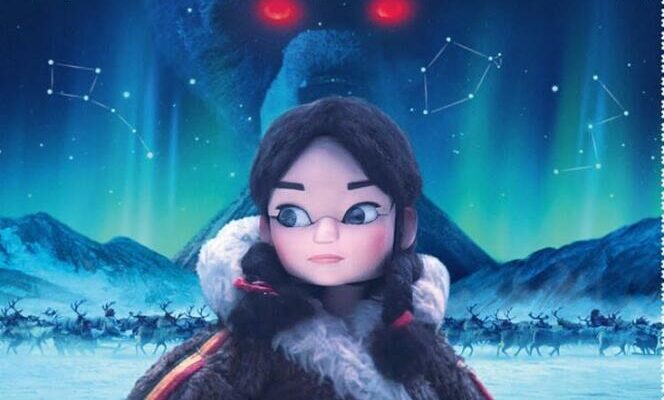THE “WORLD’S” OPINION – NOT TO BE MISSED
It’s the story of a legendary cave bear, a sick mother, and wild berries that could cure her. Without forgetting the reindeer, a sacred animal in the Nenets community, an indigenous people of Russia living near the Arctic Circle. Krisha and the Master of the Forestthe first animated feature film by South Korean Park Jae-beom, features, in this snowy landscape made of polystyrene, a small, quiet family, whose daily life is disrupted by the irruption of two faithless hunters. nor law, seeking to kill the famous bear to collect the bounty.
Here are the father, the mother and especially their two children: Krisha, the eldest, a sensitive young girl who believes in legends, and her little brother, Grysha, very reactive, who bothers her a little. While the mother falls ill and no longer goes out, a shaman reveals to Krisha the existence of a cave bear watching over the preservation of precious fruits with saving virtues.
Decor respectful of reality
Made in stop motion, the film is both a drama and a thriller, as well as a fantastic adventure novel leading a young teenager to overcome her fears in order to save her mother and the ancestral culture of her loved ones – the film is recommended from 7 years old. The scenario never seeks to frighten the young audience, but maintains a nice suspense while leaving breaths, nourishing the imagination. Attentive to the voices that speak to her and guide her, in the direction of the beasts and beauties of nature, Krisha will be delighted with the unexpected discovery of an aurora borealis, a magical moment, stylized with poetry.
Likewise, the film does not hide the fact that the reindeer provides almost all the needs of humans – in addition to its fur which is used to make warm clothing, its meat and even its blood nourish the inhabitants, this way the good soup! –, but it also shows that the animal does not only have a utilitarian vocation. Pampered throughout his life, he is the object of worship and occupies a central place in the community.
Inspired by the documentary The Last Tundra (2011), by his compatriot Jang Kyung-soo, about nomadic peoples of the Siberian tundra, the South Korean director develops a fantastic story, in a setting that is as naive as it is respectful of reality. One of the great ideas consists of “reviving” the cave bear, a prehistoric animal, the filmmaker Park Jae-beom having been strongly marked by the exceptional discovery, in 2020, of the corpse that died fifteen thousand years ago (due to the melting of permafrost), still equipped with its skin, its hair, its nose.
You have 25% of this article left to read. The rest is reserved for subscribers.
